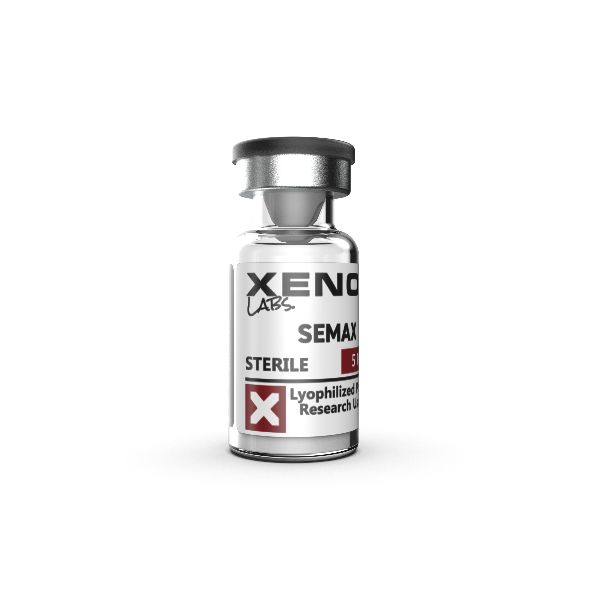


Known for its nootropic, neuroprotective, and neurotrophic properties, Semax has been shown to enhance memory and learning while protecting brain cells. Recent studies highlight its ability to inhibit Aβ fiber formation, especially in the presence of copper ions, which play a critical role in Alzheimer's pathology. By stabilizing Cu2+ ions and preventing amyloid plaque buildup, Semax could be a key agent in preventing neurofibrillary tangles that contribute to Alzheimer’s-related cell damage. These neuroprotective effects make Semax a potential candidate for addressing central nervous system disorders where amyloid aggregation is a factor.
Sciacca, M.F.M., Naletova, I., Giuffrida, M.L. and Attanasio, F., 2022. Semax, a Synthetic Regulatory Peptide, Affects Copper-Induced Abeta Aggregation and Amyloid Formation in Artificial Membrane Models. ACS Chemical Neuroscience.
Disclaimer: Information provided it this page is for general information only and does not substitute for professional medical advice.
For detailed information about Semax by Xeno Labs, consult with your doctor or healthcare professional.


Sciacca, M.F.M., Naletova, I., Giuffrida, M.L. and Attanasio, F., 2022. Semax, a Synthetic Regulatory Peptide, Affects Copper-Induced Abeta Aggregation and Amyloid Formation in Artificial Membrane Models. ACS Chemical Neuroscience.

Sciacca, M.F.M., Naletova, I., Giuffrida, M.L. and Attanasio, F., 2022. Semax, a Synthetic Regulatory Peptide, Affects Copper-Induced Abeta Aggregation and Amyloid Formation in Artificial Membrane Models. ACS Chemical Neuroscience.

Sciacca, M.F.M., Naletova, I., Giuffrida, M.L. and Attanasio, F., 2022. Semax, a Synthetic Regulatory Peptide, Affects Copper-Induced Abeta Aggregation and Amyloid Formation in Artificial Membrane Models. ACS Chemical Neuroscience.